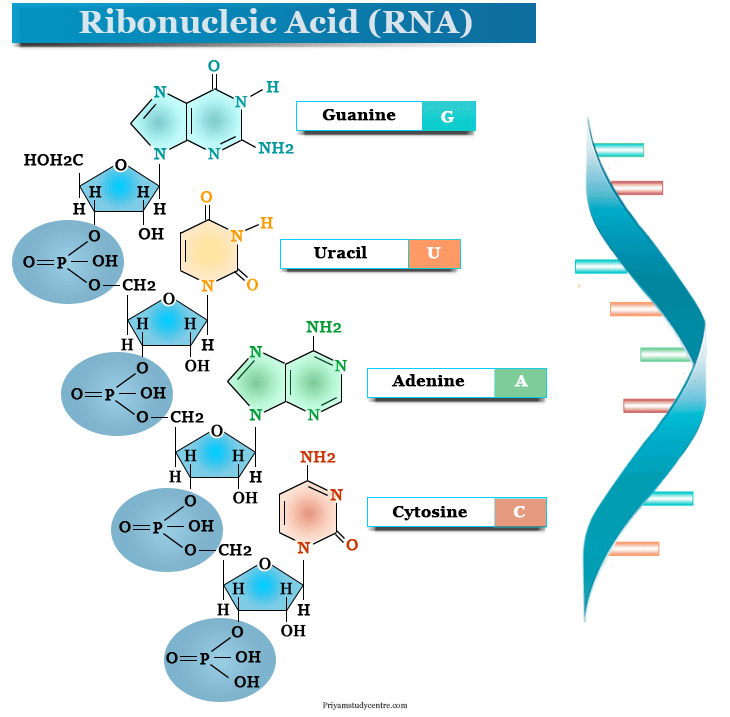
Ribonucleic acid – An essential intermediate
Ribonucleic acid (RNA) is a nucleic acid that can be found in all living cells and has structural similarities to DNA. Unlike DNA, RNA is single-stranded. An RNA molecule has a backbone made of alternating phosphate group and the sugar ribose, in contrast to DNA in which deoxyribose can be found. Attached to each sugar is one of four bases: adenine, uracil, cytosine, and guanine. Different types of RNA exist, including messenger RNA, ribosomal RNA, and transfer RNA. In addition, there are RNA which are involved in the regulation of gene expression.
Flow of information from DNA to functional proteins
The central dogma of molecular biology outlines the flow of information from DNA to functional proteins. This information is stored in DNA as genes, further transcribed into RNA and finally translated into proteins. Depending on the cell identity, a specific subset of genes is transcribed into complementary RNA molecules. Defined as transcriptome, these RNA molecules are essential for interpreting the functional activities of the genome and regulating the biological activities within a cell (1).
The central dogma of molecular biology defines RNA molecules as simple intermediates between genes and proteins. However, the transcriptome has a high degree of complexity and encompasses various types of coding and non-coding RNA species. (2).
Messenger RNA
Messenger RNA molecules (mRNA) represent the most frequently studied RNA species because they encode proteins via the genetic code. However, non-protein coding RNA molecules also exist and are functional. Such non-coding RNA species play important roles in the context of basic cellular functions. For instance, ribosomal RNA and transfer RNA are involved in mRNA translation, smaller nuclear RNA is involved in splicing, and other small nucleolar RNA are involved in the modification of rRNA (3,4).
Ribosomal RNA (rRNA) forms a part of protein synthesizing organelle known as ribosome and that is exported to the cytoplasm to help translate in messenger RNA into protein. They account for 80% of the total RNA present in the cells.

Long non-coding RNA
Another class of functional RNA were described, called long non-coding RNA (IncRNA). They have been shown to be involved in chromatin remodelling, transcriptional control, and posttranscriptional processing (5).
REFERENCES:
1. Crick F. Central dogma of molecular biology. Nature. 1970;227:561–563
2. Mattick JS, Makunin IV. Non-coding RNA. Hum Mol Genet. 2006;15 Spec No 1:R17–R29.
3. Stefani G, Slack FJ. Small non-coding RNAs in animal development. Nat Rev Mol Cell Biol. 2008;9:219–230.
4. Wilusz JE, Sunwoo H, Spector DL. Long noncoding RNAs: Functiona surprises from the RNA world. Genes Dev. 2009;23:1494–1504
5. Mercer TR, Dinger ME, Mattick JS. Long non-coding RNAs: Insights into functions. Nat Rev Genet. 2009;10:155–159.



